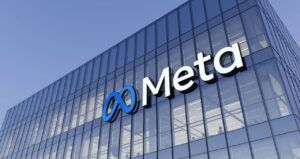According to the trustee designated by the court in the Synapse bankruptcy case, there is a gap of $85 million between the amount of money that partner banks of the fintech intermediary Synapse are holding and the amount that depositors are entitled
Customers of fintech companies who went through the process of connecting with banks via Synapse had balances totaling $265 million.
On the other hand, the trustee Jelena McWilliams said in a report that was submitted late on Thursday that the banks themselves only had a total of $180 million linked with those accounts.
To make matters even worse, she said that it is still unknown what happened to the cash that went missing.
According to the trustee designated by the court in the Synapse bankruptcy case, there is a gap of $85 million between the amount of money that partner banks of the fintech intermediary Synapse are holding and the amount that depositors are entitled.
Customers of fintech companies who went through the process of connecting with banks via Synapse had balances totaling $265 million. On the other hand, the trustee Jelena McWilliams said in a report that was submitted late on Thursday that the banks themselves only had a total of $180 million linked with those accounts.
What is at the core of the most severe breakdown in the financial technology industry in the United States since its inception in the years after the financial crisis of 2008 may be explained by the monies that have gone missing. As a result of arguments about user balances, more than one hundred thousand consumers of a wide variety of fintech businesses have been prevented from accessing their savings accounts for almost a month. This comes following the demise of Synapse, a company that was financed by Andreessen Horowitz.
Although Synapse and its partners, notably Evolve Bank & Trust, have accused one other in court documents of unlawfully shifting balances or maintaining wrong ledgers, the analysis that McWilliams has produced is the first effort from an independent source to identify the extent of the monies that have been missing in this debacle.
Numerous unknowns
Following his appointment as trustee on May 24, McWilliams has collaborated with four financial institutions, namely Evolve, American Bank, AMG National Trust, and Lineage Bank, to reconcile the different ledgers of these institutions. This has enabled consumers to restore access to their monies.
Nevertheless, in order to finish the project, the banks want a great deal more information. This includes gaining an understanding of how the brokerage and lending activities of Synapse may have influenced the flow of funds, as stated by McWilliams. She said that it seemed like Synapse had mixed money around a number of different organizations, using a number of different banks to service the same businesses.
To make matters even worse, she said that it is still unknown what happened to the cash that went missing.
“The source of the shortfall, including whether end-user funds and negative balance accounts were moved among Partner Banks in a way that increased or decreased the respective shortfalls that may have existed at each Partner Bank at an earlier time,” McWilliams wrote. “At this time, it is not known whether the shortfall was caused by the movement of resources between Partner Banks.”
The requests for comment that were made to McWilliams, who was once the head of the Federal Deposit Insurance Corporation and is now a partner at the law firm Cravath, were no longer answered.
Propagating the suffering
She said in her report that the mission that McWilliams is attempting to do has become more difficult due to the fact that there are no funds available to hire external forensics companies or even former Synapse employees to assist. On May 24th, Synapse terminated the employment of its last employee.
Nevertheless, she said that some clients whose monies were kept at banks in what are known as demand deposit accounts have already started obtaining access to their accounts.
On the other hand, consumers whose assets were pooled in a community manner known as for benefit of, or FBO, accounts would have a more difficult time retrieving their money. According to her, the completion of a comprehensive reconciliation will take many more weeks.
McWilliams submitted various possibilities for Judge Martin Barash to examine during a hearing that will take place on Friday. These choices will enable at least some FBO clients to recover access to their cash. McWilliams delivered her report.
It is possible to pay certain clients in full while deferring payments to others, depending on whether or not the individual FBO accounts have been reconciled. This is one of the choices. There is also the possibility of distributing the deficit in an equitable manner across all of the customers in order to make the limited cash accessible sooner.
There is a catastrophe at hand
At the beginning of the public hearing that took place on Friday, McWilliams informed Barash that her recommendation was that all FBO customers receive partial payments. This “will partially alleviate the effects to end users who are currently waiting locked out of access to their funds,” while also maintaining a reserve for payments that will be made at a later date.
However, the statements made by Barash raise questions about the way in which that might proceed.
In addition to expressing his profound gratitude to McWilliams for her efforts, the judge said that he grappled with the question of “what I can do, and how I can help.”
The situation is considered to be “uncharted territory,” and according to Barash, it is unclear what the bankruptcy court could do since the monies that were deposited by the depositors were not the property of the Synapse estate.
“I would like to see a resolution to this crisis, but I am not sure if people are looking for court orders or what I can provide in terms of court orders,” said Barash. “This is a crisis, and I would like to see a resolution.”



